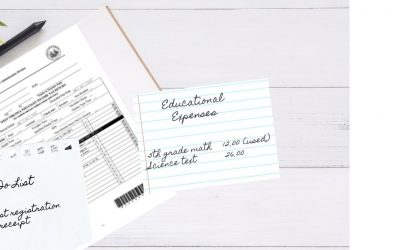by Charly Shreves
Our eight-year-old son, Brody, had been struggling for quite a while. He confused letters and numbers, made grammatical and spelling errors that weren’t age-appropriate, and completed any work at an excruciatingly slow pace. It wasn’t a behavior issue; despite obvious difficulty, he persevered patiently and compliantly, and I found myself respecting his persistence in the face of obvious difficulties. But something wasn’t right, and I was determined to find answers.
After endless hours of praying, researching his symptoms, and referring back to my college classes in Special Education, my husband and I decided to seek professional help from a psychologist.
Extensive testing revealed a substantially low Visual Memory and Processing Speed on Brody’s IQ profile. The timed area on Achievement Tests was also below grade level. Neither result was surprising; he had always struggled to complete anything timely. But what the psychologist said next was truly alarming:
“If Brody were in public school,” she said, “I would diagnose him with ADD-NOS.”
ADD-NOS means “Attention Deficit Disorder – Not Otherwise Specified.” She would diagnose him so he would be eligible to receive services under a 504 plan. She explained that he also had dysgraphia and recommended OT (Occupational Therapy). I suspected that if Brody indeed were in school, they would recommend medication because, if we’re honest, that’s how these diagnoses are typically remedied.
I left her office feeling helpless, frustrated, and heartbroken. The dysgraphia made sense. The ADD-NOS, however, wasn’t only not what I wanted to hear, but more importantly didn’t make sense to me. Over the following months, we continued to homeschool, but I began seeking counsel from those whose opinions I valued, and I prayed harder. I knew I had to dig deeper if I was going to really help Brody be successful in school.
Finally, in late November, we wound up two hours away from home seeing an optometrist who specializes in Developmental Vision Therapy. It was a shot in the dark. But within the first five minutes of that first appointment, I knew we were exactly where we needed to be. Early in the session, the doctor politely excused himself for what seemed like forever, then came back and continued with us. Later I learned that he had cleared his entire waiting room in order to be with us for nearly three hours! Little did I know we were beginning a process that would be a pivotal point in Brody’s life.
The optometrist diagnosed Brody with five things: farsightedness and astigmatism (pretty common), convergence insufficiency (constant double vision 24″ from his face), accommodative dysfunction (inability to focus) and oculomotor dysfunction (uncontrollable eye movements). Wow! Poor kid! No wonder seemingly simple tasks, like kicking and catching a ball or going up and down steps, was so difficult for him. In hindsight, I hadn’t even realized these were issues for Brody. As a parent, I had naturally embraced his weaknesses and had tried to foster his strengths.
The doctor ordered glasses with prisms to be worn for two months along with continued OT, followed by an intensive vision therapy program which would be home-based. It was all starting to make sense to our entire family, including Brody. The diagnosis fit what we had been experiencing. It also explained the low drop in his IQ profile Vision and Processing Speed as well as the timed area on his Achievement Tests. Finally we were moving in the right direction with a diagnosis we knew was far more accurate.
None of these problems had been detected at the three separate eye appointments Brody had had prior to this. All three said he was slightly farsighted, but no glasses were recommended because “his eyes were young and strong.” Brody was trying to tell us that something wasn’t quite right and that he saw double vision, but even professionals overlooked it.
Brody’s case shows that much too often, children are incorrectly assigned diagnoses like ADD-NOS in hopes of finding quick and easy answers. Sometimes, the answers aren’t so black and white. We, as educators of our children, have to seek and exhaust all options.
I’m so thrilled to say that Brody recently had a follow-up and is now seeing 20/20 with his glasses, only seeing double vision 6″ from his face rather than 24″, the prism and cover test improved from 16 to 2, and he can now see 3-D. He is just beginning his vision therapy and we will return for a follow-up in five weeks. The doctor foresees that Brody will soon be able to wear glasses without prisms. The future is looking much brighter and I feel so blessed that we have found the resources that he needs to succeed.
Homeschooling isn’t always easy, but it’s the most beautiful, crazy adventure in life we’ll ever take. Our family is so thankful for the continued support from our extended family, homeschool group, and church, and we feel blessed to be witnesses of God’s amazing work!





Recent Comments